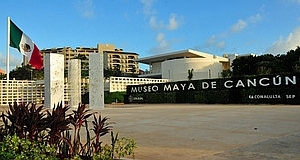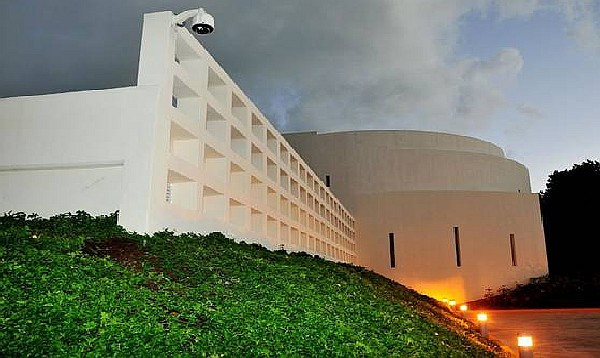Cancun, Mexico - Cancun is home to a new museum that highlights the area’s early inhabitants. The Maya Museum flung wide its doors earlier this month after a construction process that had lasted for six years and a price tag of $15 million. Located in the resort’s hotel zone, this cultural hotspot will hope to lure tourists away from the sands and bars, and into its five buildings full of exhibits.
The state-of-the-art Mayan Museum will act as the crown jewel of Cancun’s tourist attractions. The city, which is Mexico’s number one tourist destination, sees around twelve million tourists a year. They flock to the area for its amazing beaches and for the archaeological tourist destinations centered around the ancient Mayan culture.
Cancun acts as the gateway to the highly popular Mayan Riviera tourist area of southern Mexico. It lies about 50 miles north of the fabled seafront site of Tulum – a former Mayan port – and 100 miles from the archaeological wonderland of Chichen Itza, whose grand 'El Castillo' temple was voted one of the Seven ‘New’ Wonders of The World.
 |
The new Mayan Museum is expected to attract about a million visitors annually. It contains more than three hundred ancient artifacts, many of which have never before been displayed to the public. A major highlight of the collection is the 14,000-year-old remains of ‘La Mujer de las Palmas’ (‘The Woman of the Palms’), a skeleton that was discovered in a local cenote – one of the many underwater caverns that riddle the Yucatan Peninsula, on which Cancun sits – in 2002.
The museum was created and will be run by the National Institute of Anthropology and History. The fifty-five thousand square foot cultural attraction is the largest project taken on by the National Institute of Anthropology and History since 1987, when they opened the Templo Mayor Museum.
Interest in the Mayans, and travel to the area, has spiked in recent times thanks to the spread of the "Mayan Prophecy" in popular culture. It has been widely circulated that the Mayan calendar predicts the end of the world will occur on December 21, 2012. While scholars have long spoken out about the inaccuracy of the meaning of the end of the Mayan calendar, the idea has become firmly rooted in pop culture.
The Mayan Empire reached its peak in the sixth century A.D. But by 900 A.D. its great cities lay abandoned. As a people the Mayans were skilled builders, mathematicians, and agriculturalists who built enormous stone cities and elaborate trade routes. The reason for their decline is a mystery that is hotly debated by even today’s scholars. Tourists flock to southern Mexico, Belize, and Guatemala to visit the remains of the Mayan’s cities.
The brand new Mayan Museum is located in the hotel zone of Cancun. Admission to the museum is $5 USD. Those under twelve or over sixty get free admission.


